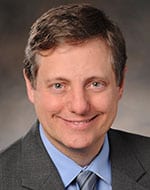Date: Thursday, 18 April 2019
Time: 11:00 – 18:30
Room: C1061
Track Description
Ranging from on-body bio-sensors, to instrumented smart homes, to sensor systems for industrial use and manufacturing, to area-wide networks of environmental sensors, “Sensor Systems” are at the core of the Internet of Things ecosystem. The data generated from sensors is an essential building block in IoT for driving the decisions and actions that create value and that enable new capabilities.
This Track is focused on examining industry and technology trends for systems that sense and transduce informational, physical, biological, and chemical phenomena in relation to highly impactful IoT applications. In keeping with the themes of the World Forum the Track will specifically address the requirements, development, implementation, and operations of Sensors and Sensor Systems for the Vertical Areas chosen for the World Forum.
- Agriculture
- Automotive and Transportation
- Healthcare, Pharmaceuticals, and Medical Devices
- Industrial IoT
- Maritime IoT
- Smart Cities and Public Safety
The Track is organized into three two hour Sessions. Through a series of presentations and panel discussions, thought leaders from industry, academia, and government will examine the following:
- Emerging Sensor Technologies and the Potential Impact to IoT
- Commercial Opportunities, Applications, and Market Challenges
- Standardization efforts for Sensors and Sensor Networks
Representatives of the IEEE Sensors Council will be supporting the Track and provide opportunities for collaboration and standardization beyond the World Forum. We hope that you can join us and be part of the vigorous dialog and help build the future of IoT.
Schedule
11:00-13:00 Session 1, Intelligent Integrated Sensor Systems
Talk 1 “Efficient Task Allocation for Resource Management in IoT: Objects Cooperation from Mobile CrowdSensing to Smart Buildings”, Virginia Pilloni, University of Cagliari
Talk 2 “An IoT Enabled Integrated Multimodal Sensing System for Monitoring Perishable Commodities – IIMsense”, Jayita Dutta, TCS Research
Talk 3 “Industrial Sensors and System for IOT Integration”, Bernard Clary, CMR Group
Panel Discussion
13:00-14:00 Lunch
14:00-16:00 Session 2, Sensing for Smart and Resilient City
Talk 4 “Case Study of Technology Transfer: Optical Topography for Firearms Impression Evidence Examination”, John Morgan, RTI International
Talk 5 “An Early Warning System of Landslide by Multi-Point MEMS Tilting Sensors Technology”, Lin Wang, Chuo Kaihatsu Corporation, Japan
Talk 6 “Vertical AI and AI-Enabled Sensing for Smart and Resilient City”, Yu-Hsing Wang, The Hong Kong University of Science and Technology.
Panel Discussion
16:00-16:30 Coffee Break
16:30-18:30 Session 3, Intelligent Environment and Agriculture
Talk 7 “Intelligent Sensors for Environmental Monitoring”, Levente Klein, IBM T.J. Watson Research Center
Talk 8 “Powering the Next Generation IoT – Towards Power Autonomous Wireless Sensors”, Colm McCaffrey, VTT Technical Research Centre of Finland
Talk 9 “IoT and Agriculture; A Start-Up Perspective”, David McDonnell, Anuland,
Wrap-up and Summary
Track Co-Chairs
Gerard Hayes, Wireless Research Center of North Carolina
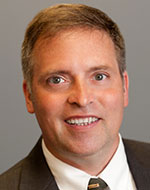 Dr. Hayes has nearly three decades of experience in government and commercial electromagnetic research and design. Prior to working with the Town of Wake Forest to establish the WRCNC in 2010, Dr. Hayes was the Director of Engineering at GreenWave Scientific where he led the development of antenna and RF circuit designs for a diverse range of DoD applications. At Sony Ericsson Mobile Communications (USA) Inc., Dr. Hayes provided global technical leadership in the Technology and Research organization with contributions to handset antenna design, technology, and radiated performance optimization. At Lockheed Martin (formerly Lockheed Missiles and Space Co.), Dr. Hayes supported research and development efforts for space-based, phased array applications. The scope of his experience encompasses electromagnetic theory, bioelectromagnetics, antenna design, RF circuit analysis, and material engineering. He has participated in the development of international standards for OTA, HAC, and SAR evaluation (including IEEE, IEC, CTIA, and C63 standards). With over 70 US patents, Dr. Hayes has maintained a prominent technical role in the wireless industry.
Dr. Hayes has nearly three decades of experience in government and commercial electromagnetic research and design. Prior to working with the Town of Wake Forest to establish the WRCNC in 2010, Dr. Hayes was the Director of Engineering at GreenWave Scientific where he led the development of antenna and RF circuit designs for a diverse range of DoD applications. At Sony Ericsson Mobile Communications (USA) Inc., Dr. Hayes provided global technical leadership in the Technology and Research organization with contributions to handset antenna design, technology, and radiated performance optimization. At Lockheed Martin (formerly Lockheed Missiles and Space Co.), Dr. Hayes supported research and development efforts for space-based, phased array applications. The scope of his experience encompasses electromagnetic theory, bioelectromagnetics, antenna design, RF circuit analysis, and material engineering. He has participated in the development of international standards for OTA, HAC, and SAR evaluation (including IEEE, IEC, CTIA, and C63 standards). With over 70 US patents, Dr. Hayes has maintained a prominent technical role in the wireless industry.
Yu-Hsing Wang, Hong Kong University of Science and Technology (HKUST) and Data-Enabled Scalable Research (DESR) Laboratory
Prof. Yu-Hsing WANG received his B.S. and M.S. degrees in Civil Engineering from National Taiwan University and Ph.D. in Civil Engineering from Georgia Institute of Technology where he received the George F. Sowers Distinguished Graduate Student Award for Ph.D. Students. Prof. Wang is a Professional Geotechnical Engineer in Taiwan since 1996. Currently, he is Professor and Associate Department Head at the Department of Civil and Environmental Engineering and founder/director of Data-Enabled Scalable Research (DESR) Laboratory, the Hong Kong University of Science and Technology (HKUST). The DESR Lab is a Makerspace, specialized in the applications of Vertical AI, integrated with Geotechnical Internet of Things (Geo-IoT), Big Data Analytics, and Deep Learning, etc., on sustainable urban development and city resilience. In 2005, he received the ASTM International Hogentogler Award. In 2008 and 2017, he received the School of Engineering Teaching Award, HKUST. In 2013, he received the Distinguished Alumni Award from the Department of Civil Engineering, National Taiwan University. He has been invited for Keynote and theme lectures in the international conferences and served as associated editors and editorial board members in different journals.
Track Speakers
Bernard Clary
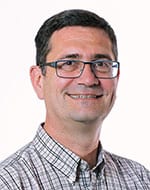

Talk Title: Industrial Sensors and System for IOT Integration
Jayita Dutta


Talk Title: An IoT Enabled Integrated Multimodal Sensing System for Monitoring Perishable Commodities – IIMsense
This talk illustrates a novel integrated system, IIMsense, where a collection of specially select sensors, Cloud computing and IoT platform are combined to offer a state-of-the-art solution for a wide variety of monitoring and sensing requirements, specifically for perishable commodities such as fish, meat, dairy product, post-harvest fruits etc. IIMsense is housed in a custom designed robust enclosure capable of maintaining temperature and humidity. One or more suites of integrated sensors such as gas sensors (E.g. CO2,O2,NH3,C2H4 etc.), optical sensors, pH sensor, temperature and humidity sensors, Galvanic Skin Resistance (GSR) sensors, micro-spectrometers etc. along with multiple cameras are mounted inside the custom enclosure, allowing extensive synchronized data collection at predefined intervals. IIMsense is most effective for continuous long-term monitoring and quantitative measurements of the selected samples in a controlled environment. Furthermore, IIMsense is able to uniquely and quantitatively determine the effect of relative humidity, temperature and selective ventilation similar to those experienced in real field, storage and transit conditions. Furthermore, the sensor suite is designed to be modular, facilitating the addition or removal of sensors depending upon the requirement. IIMsense facilitates online data storage of pre-processed data via cloud along with offline data storage via USB/BLE in mobile/PC/laptop/tablet. IIMsense is fully IoT enabled and hence allows real time, online remote monitoring of perishable food items and remote data access for further data analysis via internet. This system is designed to add significant value in a wide range of application areas including supermarkets, food processing & supply chain industries in terms of predicting food freshness, ideal fruit ripening conditions and predicting shelf life.
This system is intended to assist individuals as a decision support tool by using its capability of quantitative measurements from the various measured multimodal parameters and customized AI based models. This will also ensure sustainability and reduce food wastage by dynamic decisions towards repurposing food.
Levente Klein
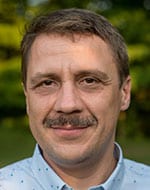

Current research interests focus on environmental monitoring of greenhouse gases, application of wireless sensing in outdoor environment and physics based modeling and analytics. His work was recognized by 3 IBM’s Outstanding Technical Achievement award and multiple IBM Research Division Award. He published more than 50 scientific publications and has 40 patents granted in USA.
Talk Title: Intelligent Sensors for Environmental Monitoring
The ambient environment is affecting human health, productivity and overall wellbeing. Many indoor sensors were developed to asses and control the surrounding environments for human comfort but once sensors are operated outdoor they must withstand harsh environmental conditions, maintain calibration and measurement accuracy. Current intelligent solutions are combining sensing and computation to dynamically determine what to measure, dynamically adjust data acquisition rate, increase data compression and enable computation close to the edge. The next leap in research is the fusion between global scale intelligent sensor networks and satellite/aerial observations that combines the high precision sampling of the local environments with global monitoring; enabling new applications like precision agriculture, air quality monitoring and disaster management. This presentation present current effort to develop intelligent sensors including sensor fabrication, quantification of sensor reliability, and integration of control loops and decision support based on sensor data. Examples in precision irrigation of vineyards, detection of fugitive methane emission for oil and gas industry and monitoring of natural disasters will be presented including the distribution of intelligence between cloud and edge computing, automatic sensor calibrations and development of big data approaches to handle massive amount of data.
Colm Mc Caffrey
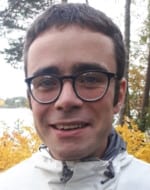

Talk Title: Powering the Next Generation IoT – Towards Power Autonomous Wireless Sensors
To enable widespread deployment of sensor systems in our world, they must be wireless and power autonomous. Power autonomy, in this context implies operation throughout the required lifetime without energy related intervention. This requires a two front approach; addressing both the need and the supply. A power-optimised system enables the exploitation of application appropriate energy sources whether they be battery power in the case short lifetime devices, energy harvesting where reliable sources exist, wireless power transfer where it can be applied, or radio backscattering techniques. This presentation will give an overview of the state of the art in these four methods of achieving power autonomy including examples of IoT devices successfully exploiting these. Four example systems will be described, applying each of these methods. The first system integrates a voltammetric electronic tongue sensor in a swallowable device for gastrointestinal disease diagnosis, with power provided by a high-density lithium manganese dioxide primary cell. The second system relates to online condition monitoring for valve leakage detection in the petrochemical industry, utilising thermal energy harvesting in the sensor node, and industrial current loop harvesting in the receiver base station to achieve a fully power autonomous system for continuous operation. The third system exploits resonant inductive coupling for a wirelessly powered device. The fourth system employs a fully passive wireless sensing platform based on radio backscattering, and a harmonic resonant sensor based on the third order intermodulation principle. In its entirety, this talk give an overview of the powering and wireless communication challenges with IoT devices and presents progress on multiple fronts on the key challenge of power supply in IoT devices.
David McDonnell
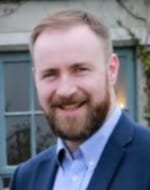

David McDonnell is the founder of agricultural technology start-up, Anuland.
David began his professional life as a farmer, and still continues to be involved. He assists with the management of the family farm, a 400 cow dairy and poultry business, with his brother Richard and father Michael. A little over 20 years ago, David began to diversify into complementary farm activities, developing a number of renewable energy projects, notably a 1MW Anaerobic Digestion plant and numerous wind farms. He is a member of the Irish Wind Energy Association, Irish BioEnergy Association and Cré.
Anuland has developed from an intersection of farming experience and renewable energy development. Anuland is focused on being farmer centric, and empowering the farmer with technology to utilise known scientific data to meet the needs of their specific farm environment, enabling the farmer to strive for the triple bottom line of financial, environmental and social sustainability.
David holds his Green Cert in Agriculture from Salesian Agricultural College Pallaskenry, a Degree in Psychology and a Masters in Business Administration from University of Limerick.
Talk Title: IoT and Agriculture; A Start-Up Perspective
Around the world awareness is growing for the need for sustainable agriculture to protect the environment and secure food supply. There is increasing acceptance that current industrial and agricultural practices will drastically change the climate to the detriment of all species on earth if those practices continue on their current trajectory. The challenge is there to sustainably feed the growing population on our planet.
Today’s young farmers want to optimise production in a sustainable profit-efficient manner. Many are turning to technology to help them, and it is widely acknowledged that IoT in Agriculture plays an important role in this. However, there is huge variability in farming practices across the world. Technology needs to understand its end customer. In agriculture that is the farmer.
Farmers are concerned about Legacy. It can take several generations of farmers to understand and gain in-season data on their land. The role of IoT, Sensors & Sensor Systems should help in understanding data derived from the land and if done right the rewards are great. This presentation will look at how agriculture is using sensors and sensor systems, the importance of the farmer, and the challenges faced in adoption of new sensors and systems.
John S. Morgan
Dr. Morgan is internationally recognized for his work in forensics, body armor, special operations technology, and predictive policing. He oversees and develops forensic science research, training, and quality assurance programs at RTI International, including the National Institute of Justice Forensic Technology Center of Excellence and the Substance Abuse and Mental Health Services Administration’s National Laboratory Certification Program. He has conducted research in optoelectronic materials, countering weapons of mass destruction, and a wide variety of police and forensic technologies.
Previously, Dr. Morgan was a member of the Maryland House of Delegates and Congressional Science Fellow of the American Physical Society. He has served in the U.S. Department of Justice and the U.S. Department of Defense as a senior executive managing programs that encompass scientific research, public safety, military technology, special operations, information systems, and standards, including as Deputy Director for Science and Technology at the National Institute of Justice and the Combatting Terrorism Technology Support Office, as well as Command Science Advisor for the US Army Special Operations Command. He received the 2007 Service to America Medal for his work to improve the nation’s capacity to conduct DNA analysis.
Talk Title: Case Study of Technology Transfer: Optical Topography for Firearms Impression Evidence Examination
Although confocal microscopy was invented many decades ago, forensic laboratories have not applied optical methods to capture topographic information from bullets and cartridge casings. Instead,examiners have relied on the comparison microscope and the qualitative judgment of trained examiners. In recent years, researchers and forensic practitioners have adapted several technological approaches to meet the requirements for application of optical topography to image and analyze firearms evidence. This case study illustrates that the development of a technology is not a unitary event, because its application in an operational setting requires extension into systems appropriate for purpose. In the case of optical topography, it is necessary to characterize specimens with irregular shapes, thus limiting the usefulness of methods that are limited in the imaging of steep slopes. Image artifacts must be well understood, because of the possibility of incorrect identifications must be limited or at least mitigated. This issue extends to image titching and enhancement techniques, which may introduce artifacts or eliminate information that would exclude a match. More specifically, bullet and cartridge case impressions vary based on firearm model, ammunition, and manufacturing methods, among other variables. The digital capture of optical topographic information across a wide range of these variables may permit a statistical characterization of firearms evidence matches to supplement or even replace qualitative judgments from the comparison microscope. This possibility requires a complete reexamination of the process of firearms examination, the basis for judgments in the discipline, and training of examiners, all of whom have been trained on existing methods. As a forensic science method, the entire system must be subject to validation from evidence collection through data collection, analysis and decision. This paper describes the process by which the scientific and practitioner communities have collaborated to transition optical topography from the research laboratory to the crime laboratory and the impact that this work is having on criminal justice outcomes.
Virginia Pilloni
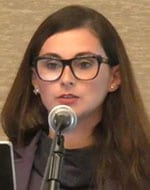

Talk Title: Efficient Task Allocation for Resource Management in IoT: Objects Cooperation from Mobile CrowdSensing to Smart Buildings
The Internet of Things (IoT) is characterized by heterogeneous objects that dynamically cooperate and make their resources available, with the aim of achieving a common objective. Thanks to the pervasive spread of smart objects, the IoT is expected to offer amazing improvements in collecting, processing and distributing information. With the aid of context awareness technologies, objects will gain the intelligence to provide information on their status and acquire data from other objects. This entails that devices will implement a certain level of logic to coordinate in the execution of collaborative actions so as to optimize the management of their available resources (e.g. lifetime, storage, processing capabilities) and improve the system reliability.
The objective of this talk is to analyze the opportunities and challenges related to efficient task allocation for optimal resource management in IoT scenarios. The talk will first introduce the technologies that can be used to address the IoT challenges that affect resource management. It will later focus on the main approaches proposed by the literature for the deployment of applications to IoT objects. The talk will discuss how the analyzed approaches address the problem of optimizing different resources, and which constraints are considered in order to satisfy quality requirements. Accordingly, the application of these approaches to some typical IoT scenarios, such as Mobile CrowdSourcing (MCS) and Smart Buildings, will be investigated.
Lin Wang
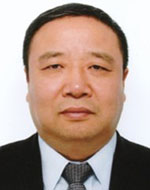

L. Wang, who working at Chuo Kaihatsu Corporation, is a senior manager of geotechnical engineering with expertise in rain-induced slope instability, earthquake-induced slope instability, development of slope monitoring and alarm system. He undertook his PhD at the University of Tokyo, Japan, after graduation he is engaged in the research and development of the monitoring of landslide and slope failures in the long term.
Recently he carries out the research, supported by cabinet office, government of Japan, and finished the SIP (Cross ministerial Strategic Innovation Promotion Program) research during 2014-2017, which theme is R&D of Early Warning Monitoring System of Slope Failure Based on Multi-point Tilt Change by using IoT and MEMS technology. The results of research are now deployed to Japan, Australia, Taiwan, China and India during last ten years.
Talk Title: An Early Warning System of Landslide by Multi-Point MEMS Tilting Sensors Technology
(The case studies of IoT technology and MEMS technology which used to landslide and slope failures in Japan, Australia, India, Taiwan and China)
An early warning monitoring system is one of the most effective ways to reduce disasters induced by slope instabilities. Many large-scale disasters induced by rainfall and earthquakes occurred in the world, and many people’s life were lost by the disasters. To reduce vulnerability to such slope and landslide hazards, an early warning system becomes important, and for this purpose, a newly developed simple and low-cost early warning system for slope failure and landslides is presented here. The new system is based on a tilt sensor that is easy to install. The sensor can monitor water content and slope deformation with a tilt Micro Electro Mechanical Systems (MEMS) module embedded in the sensor unit, and it can transfer real time data via a wireless network based on IoT technology. Since 2010, the monitoring system has been used in many actual large-scale slope failure and landslide sites to validate field performance. We report on several monitoring cases by using IoT sensor technology to show that the early warning system adequately monitors the stability of landslide, slope failure fields in Japan, Australia, India, Taiwan and China. Based on the field site test results, the monitoring method is proposed for regions of increased hazard of earthquake-induced slope failure.
Acknowledgments:
This research has been supported by SIP (the Cross-ministerial Strategic Innovation Promotion Program) of the Cabinet Office of Government of Japan, Grants-in-Aid for Scientific Research of the Japan Society for the Promotion of Science (JSPS), Core-to-Core Program “B. Asia-Africa Science Platforms” (JSPS), Construction Technology Research and Development Subsidy Program of the Ministry of Land, Infrastructure, Transport and Tourism of Japan, and International Cooperation Project of the Chinese Ministry of Science and Technology (projects: 07(2007DFA21150) and 09(2009DFB20190)).
Yu-Hsing Wang
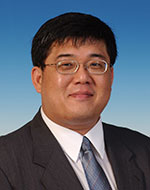


Talk Title: Vertical AI and AI-enabled sensing for Smart and Resilient City
Building a world-class smart and resilient city is an endless endeavor of the Hong Kong government. The advent of AI Era enables the feasibility and even accelerates the progress towards this goal. In this talk, we, from the Data-Enabled Scalable Research (DESR) Laboratory of the HKUST, will first showcase how the Vertical AI, an integrated solution from sensor design/deployment, data gathering, building the big data infrastructure, AI-enabled big data analytics, to the semantic integration for a better decision making, can be leveraged to spearhead the development of smart and resilient city. Then, based on the development of Vertical AI, we will focus on the next generation of sensor and sensing system for the AI Era, i.e., AI-enabled sensing. We will showcase different implementations that involved different data types garnered, including image, sound, and vibration data, to evaluate the performance and the potential impact of AI-enabled sensing from a holistic point of view.



